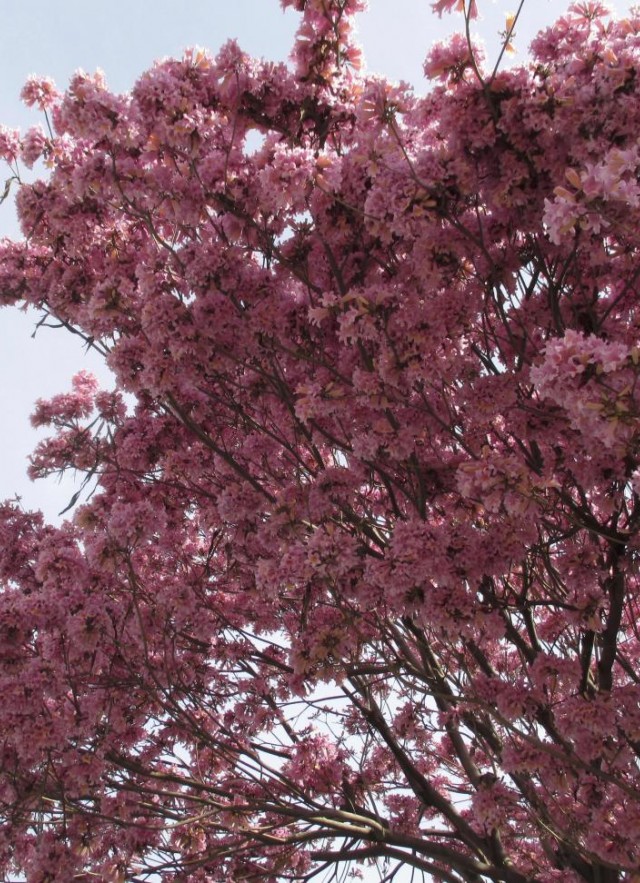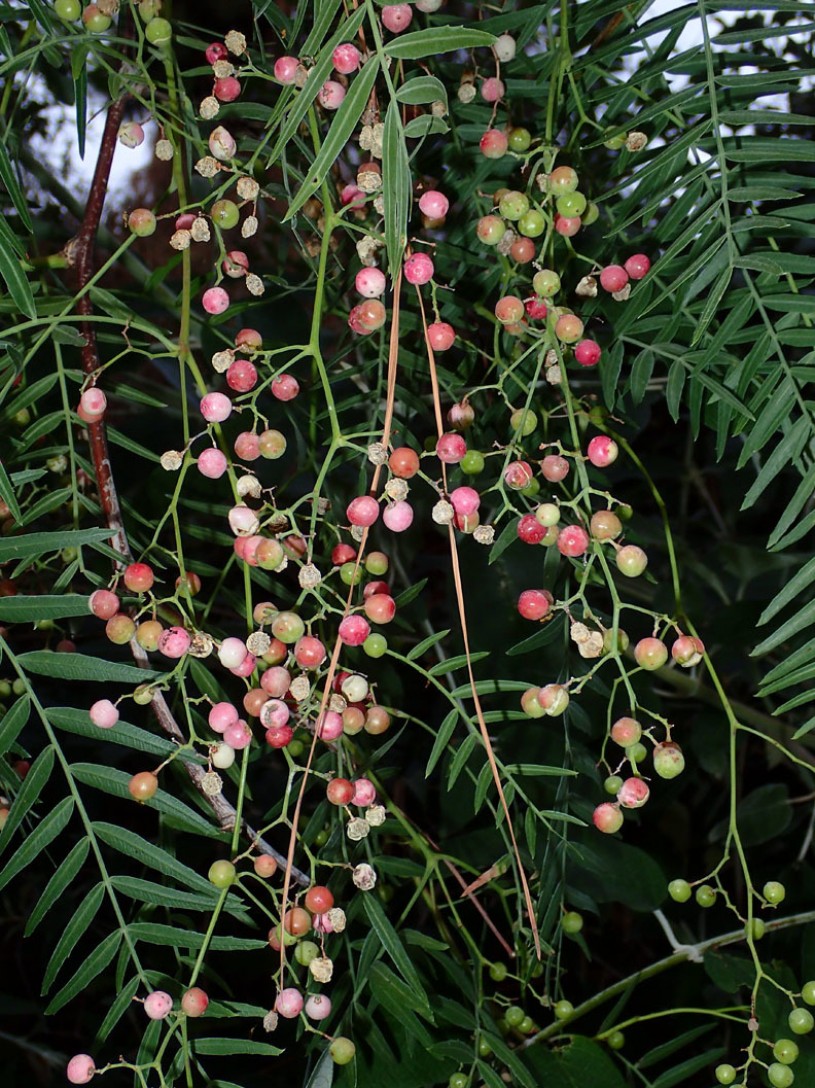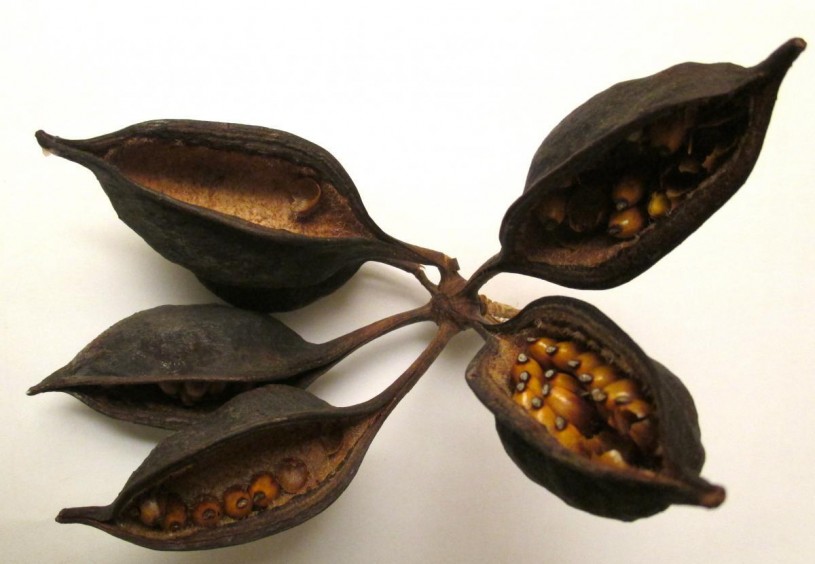L.A.'s Street Trees
What trees line the L.A. streets?

Originally published on March 30, 2017
Glancing down one street in Los Angeles County reveals no less than seven tree species native to Northeastern Australia (Bottlebrush and Carrot wood tree), East Asia (Camphor tree), the Mediterranean (Italian cypress), eastern North America (Tulip tree), and California (Coast live oak and California sycamore).
Continuing a block in each direction are loquat fruit trees from east Asia, spongy-barked Cajeput trees from Southeast Asia, delicate-looking Peruvian Pepper trees from South America, and an impressive stand of Canary Islands pines. Nearby stands a stately Californian coast redwood, a small grove of Mediterranean olive trees, a large blue atlas cedar native to the Himalayas, and a dazzling Norfolk Island monkey puzzle tree.

What kind of botanical garden-like neighborhood is this?
The monkey puzzle tree grows on the grounds of a bank. Canary Island pines neatly line the perimeter of the Target parking lot. Small olive trees adorn the local children’s playground. There's a lone loquat tree standing next to the bus stop, camphor tree roots crack the sidewalk near the Home Depot, and cajeput trees border the 7-11. The redwood is in my neighbor’s front yard and the Peruvian pepper trees arch over the ramp to the 5 freeway. In other words, this is an unremarkable neighborhood, but like all neighborhoods in Los Angeles County, it has a remarkable diversity of street trees.
It is very likely that the street trees where you live and those growing in the landscaped grounds of your local grocery store, coffee shop, library, and school, amount to dozens of species. When you add to this the number of trees you pass while traveling through greater Los Angeles, that total can easily exceed 75, even 100 species, some of which are island endemics, and most of which are not native to California. In a way, generations of urban planning, time, and horticultural trends have made each city block in Southern California a diverse and haphazard botanical garden.
On one hand, this artificial urban and suburban tree diversity (of mostly non-native species) doesn’t necessarily fulfill the needs of many of our native animal species (though sometimes it does). On the other hand, such breathtaking botanical diversity essentially allows anyone to “travel” around the world just by exploring their neighborhood. Not planning to visit Siberia? What about Argentina? Greece? New England? New Zealand? No matter! You can see trees native to all of these places in ONE DAY, or even in a few blocks of your neighborhood! Southern Californians often boast about how someone could ski and surf in the same day here. True, but I find it far more compelling to be able to see native California fan palms and Kentia palms from Lord Howe Island (naturally found more than 7,000 miles away from each other) on one Southern Californian city block!
The trees around us, often just greenery in the background of whatever we are doing, have stories to tell: natural histories, lessons in geography, tutorials on evolution, case studies in survival. For me, learning about Southern California urban trees has enhanced my urban life. Traffic on the 110 became an opportunity to notice (and ponder the provenance of) Hong Kong orchid trees blooming along the margin of the freeway. A book on urban trees inspired a realization that the tree growing (almost impossibly) out of a crack in the cement at the Cal State L.A. train station must be the Chinese tree of heaven. Walks with my dog and daughters became collecting expeditions aimed at finding other-worldly-looking seedpods, which we discovered were from the Kurrajong tree of Eastern Australia.
What do the tree leaves smell like when crushed? Which trees change color? Which ones flower? Which trees produce fruit that I’ve never noticed? What time of year do their new leaves start to grow? Suddenly my neighborhood is nothing but remarkable—and so is yours.
